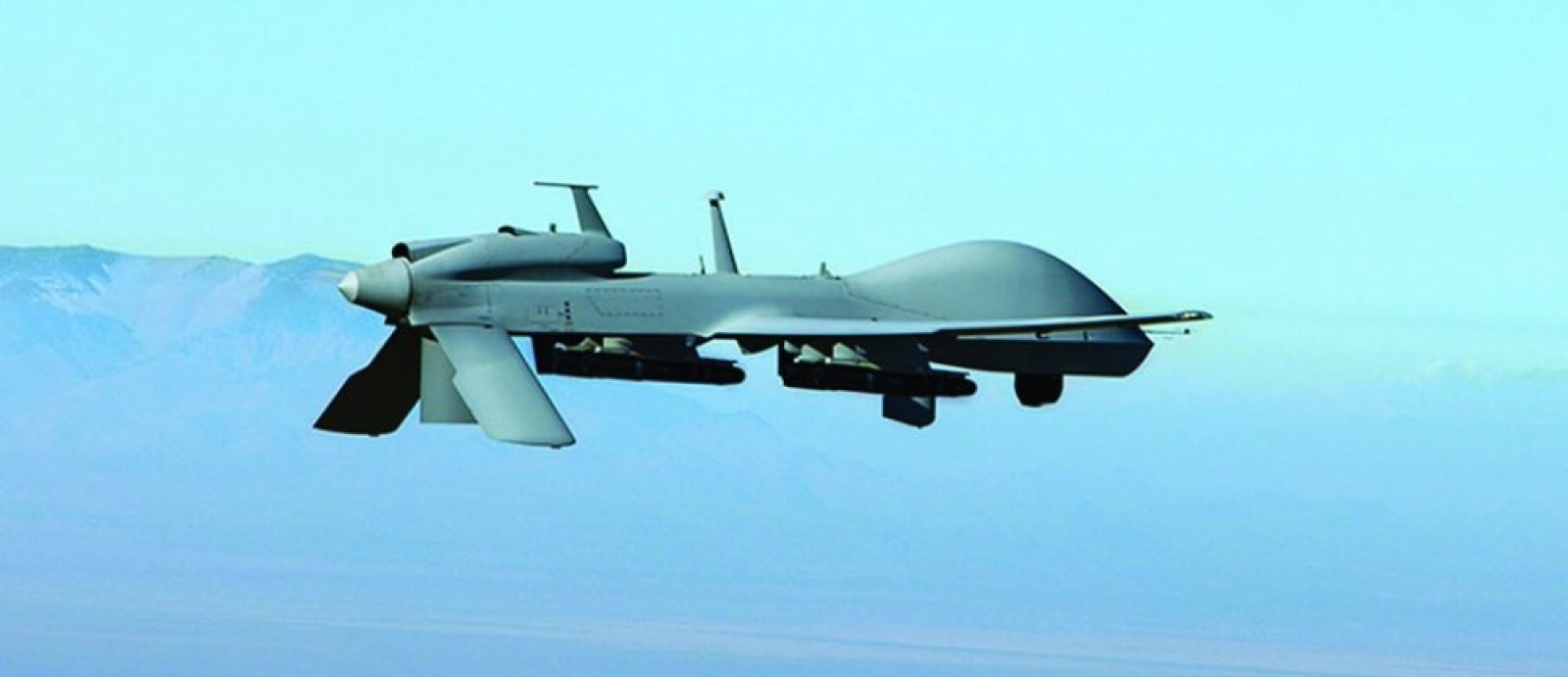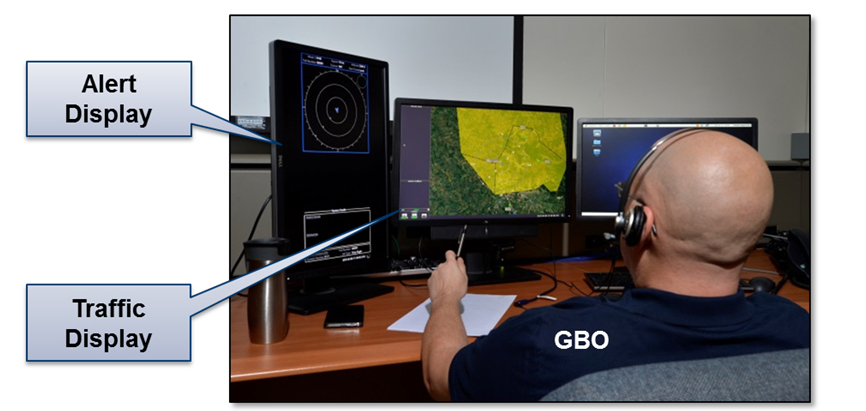
Ground-based system helps UAVs avoid collisions
The Federal Aviation Administration (FAA) is averaging more than 100 reports a month of interactions between unmanned aircraft systems and commercial or private planes. This statistic gives cause to ask: how can unmanned aircraft avoid in-air collisions?
For an unmanned aircraft system (UAS) to fly in civil airspace, it must be able to see, avoid, and remain "well clear" of other aircraft. With no pilot on board to spot approaching aircraft, another sense-and-avoid (SAA) technique is required. To address this need, Lincoln Laboratory developed the Ground-Based Sense-and-Avoid (GBSAA) System, which enables a UAS to detect and steer clear of other aircraft. The U.S. Army has been funding research at Lincoln Laboratory to develop this system with the help of SRC Inc. and Kutta Technologies.
Rather than using onboard sensors (which are still in the development phase) to provide the location of neighboring aircraft, the GBSAA System uses existing radars to locate nearby aircraft, including those not tracked by FAA systems. Data gained from the radars are processed by unique algorithms so that the system can locate and prioritize the risk from all aircraft, and then issue alerts to the pilots of the UAS at risk and compute the optimal avoidance maneuver. This arrangement allows the GBSAA System to provide sense-and-avoid services to any size UAS flying within radar coverage without requiring the UAS to carry any additional equipment.
Lincoln Laboratory's developments in system architecture, threat detection, maneuver algorithms, and analyses in this program combined to offer an important advancement in the UAV industry. "The risk of unmanned aircraft hitting other aircraft is a huge regulatory concern," said Rodney Cole, assistant leader of Lincoln Laboratory's Surveillance Systems Group. "GBSAA technology greatly reduces that concern." The GBSAA is the first system that provides both situational awareness and maneuver guidance, can be used for long-duration flights, and meets the stringent FAA requirements for flight safety.
"The key breakthrough is the use of cutting-edge computing science and logic design," Cole said. "We developed a much more sophisticated conflict-detection and avoidance logic than that used by the aviation industry in the past." The logic uniquely assesses not only the current location and velocity of each aircraft but also the uncertainty in these data and potential future threat aircraft maneuvers to determine:
- The threat posed by each nearby aircraft
- An optimal set of maneuvers for the UAS to regain a position of well clear
- A priority-ordered list of which UAS may violate the requirement to remain well clear
- The workload challenges to the UAS pilot if the pilot changes maneuvers (for example, a rapid change between a command to turn right and a command to turn left)

One GBSAA site consists of sensors configured to accept data from up to six radars, feeding into a single processing unit to produce an integrated air picture for the region. The GBSAA operator uses two displays (one for alerts and one for traffic) to fully understand the local situation and plan ahead for potential conflicts. Each workstation then runs threat detection and maneuver logic to provide guidance for each UAS. The resulting information is relayed to the UAS pilot.
"The GBSAA system is already in place at Fort Hood, Fort Campbell, Fort Riley, and Fort Bragg, and is expected at Fort Stewart," said Emilie Cowen, GBSAA program manager. "The Department of Defense is continuing to roll out GBSAA technology to new locations, but the more exciting path forward is developing this technology for small drones used for search and rescue and other important humanitarian missions."
The core technology can be readily adapted to support drones engaging in package delivery, hurricane damage assessments, and search and rescue efforts, or applied in emerging technologies like automated air taxi services. Cowen added, "GBSAA technology could form the basis of new industries we have yet to imagine." Cole concluded by saying, "Today unmanned aircraft face a wide range of restrictions because of concerns about unmanned aircraft hitting other aircraft. The ability to detect and mitigate this risk will facilitate huge growth in the UAS industry."
The GBSAA System was recently named one of the winners of R&D Magazine's awards for the 100 best innovative technologies of 2017.